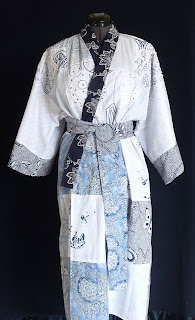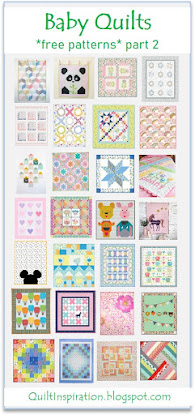According to Wikipedia, Tall Poppy Syndrome describes a social phenomenon in which people of genuine merit are resented, attacked, cut down, or criticized because their talents or achievements elevate them above or distinguish them from their peers. If a person has low status themselves, or is lacking in self-esteem,
they are more likely to want to see "tall poppies" cut down. Some people may take an active part in the process as a form of bullying. Helen Godden has created a brilliant, award-winning quilt that focuses attention on Tall Poppy Syndrome.
Cutting Down the Tall Poppies by Helen Godden (Latham, Australian Capital Territory, Australia)
Helen Godden says, "My Australian culture includes a tradition that we are not so proud of. The art of Cutting Down the Tall Poppies can be seen in all levels of society from politics to the school yard and even quilt groups!” On her blog post she explains, "The viewer does not see [the poppy cutters] at first, as you look at the pretty poppies and then you see them and think... hang on a minute, what is going on... the little pint- sized figures are sawing and cutting and snipping and axing and chain sawing and digging and even using TNT to Cut Down the Tall Poppies."
close up, Cutting Down the Tall Poppies by Helen Godden
The close up photos show Helen Godden's gorgeous free motion quilting. Cutting Down the Tall Poppies was one of 22 quilts selected from around the world for the 2013 Traditions Quilt Competition at the Houston International Quilt Festival. It won a 2nd place ribbon and a $1000 prize.
The tall poppies were painted in pretty pastel shades on a graded jade green backdrop. The quilting on the flowers themselves is intricate, with the stamens on the orange flower, above, detailed in black thread.
In the above photo, can you see the quilting in the lower left corner that looks like pieces of a jigsaw puzzle? Each section between the flower stems was quilted in a different, unique design.
We weren't aware of the term Tall Poppy Syndrome until we saw Helen's quilt, but we sure do recognize the phenomenon. Tall Poppy Syndrome is associated with envy and resentment. A closely related term is schadenfreude, which means to gloat at another person's bad luck. See the fascinating article called Tall poppies, deservingness and schadenfreude and The national hazard of workplace bullying: implications of an Australian study. Americans are not immune, as discussed in Sorrow So Sweet: A Guilty Pleasure In Another's Woe (New York Times).
Helen Godden is an ambassador/educator for Handi Quilter. She says: "I came into this quilting world with no previous sewing experience or
restrictive rules and that seems to have been to my advantage... I have received awards both nationally and
internationally and am enjoying teaching and sharing my ideas with
others. Doing my own thing and taking my own path works for me. I like
to leap outside the square and love inspiring others to step into new
territory. I teach Free Motion Machine Quilting and Liberate Quilters from the Ditch and open
their eyes to endless possibilities." Helen offers quilt patterns and books on free motion quilting. For more poppies, see Helen Godden's Tall Poppies wall hanging pattern.
Image credits: Photos were taken by Quilt Inspiration.
Thursday, May 15, 2014
Subscribe to:
Post Comments (Atom)




















A beautiful quilt made all the more so after learning the story behind it. Thank you for sharing. I have not heard the term before and am saddened that this type of thing happens so frequently in so many different settings these days. Your post has got me thinking.
ReplyDeleteWhat a fabulous quilt and the FMQ is phenomenal. I'd never heard this term before but this quilt explains it beautifully.
ReplyDeleteThis is a beautiful beautiful quilt dealing very well with a very nasty phenomena!
ReplyDeletethat is just amazing!
ReplyDeleteFabulous quilt and quilting!
ReplyDeleteAs an Australian I am fully aware of the Tall Poppy Syndrome and am embarrassed to be fully aware of its prevalence here! Helen's quilt is a beautiful and somewhat whimsical work of art with a significant message! Thank you for sharing it with us!
ReplyDeleteI had never heard of that term. What a special quilt to bring the phenomena to light.
ReplyDelete